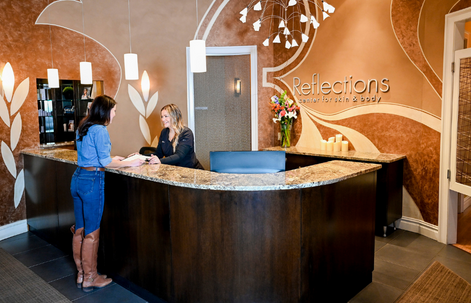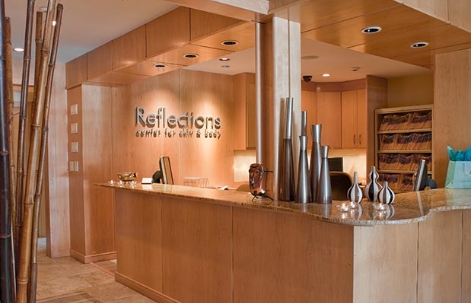Fat Transfer removes fat from unwanted areas, and transfers it to a new, more desirable location. This technique is widely used in Brazilian Butt Lifts (BBL), Facial Rejuvenation, and scar treatment for depressed, or sunken-in, scars from traumatic injury. With Fat Transfer, only a portion of the transferred fat survives in its new location, and the percentage that survives can vary widely based on a host of factors, including how much volume was transferred, how tight and elastic skin is in that area, how the patient cares for the transferred fat during the recovery process, and a whole host of other factors. What every surgeon agrees on with Fat Transfer, is that the patient’s actions during recovery directly and significantly impact how much of the fat survives.
So here are 10 things you can do after your fat transfer surgery to help ensure more fat survives:
1. WEARING THE RIGHT GARMENTS:
Beyond wearing the shaping compression garments that your surgeon recommends after surgery, you’ll need to plan to wear clothing that supports your healing process. Squeezing newly transferred fat is the fastest way to kill those cells, so you want to make sure you’re not wearing tight or restrictive clothing during your healing process.
2. FEED THE FAT:
Your body will need extra calories to sustain the extra work of providing those new fat cells with blood supply and recovering from the surgery. Eating nutrient-dense foods will provide your body with all the vitamins and minerals it needs to support its recovery. Adding in more healthy fats in your diet will be helpful during your recovery. Try adding avocados, salmon, grass-fed butter, almonds, walnuts, extra virgin olive oil, and coconut oil.
3. CREATIVE SLEEPING:
Squishing your newly transferred fat is a big no-no for at least 2 months after surgery. So you’ll need to get creative about ensuring you’re not laying on your newly transferred fat. For facial rejuvenation with fat transfer, you’ll want to sleep on your back, keeping your face from pushing up against your pillow (this is actually a practice touted by a lot of anti-aging doctors as beneficial for preventing wrinkles – because when you’ve squished your face into a pillow, forming wrinkles for hours each night, those wrinkles eventually become permanent). For Brazilian Butt Lift, stomach sleeping is a good idea. It’s a little harder for you to roll over from your stomach during the night, so that can be helpful to keep you from rolling onto your backside out of habit. Side sleeping can be an option after BBL, but only if you feel certain you won’t end up on your back.
4. NO DRIVING:
Facial fat transfer patients will typically take a day or two off of driving, while they recover at home. Brazilian Butt Lift patients will need to take at least 2 weeks off from driving, and here’s why:
Sitting on your newly transferred fat is going to squish and suffocate those fat cells; but if sitting is bad, driving is much worse. During driving, when you push down on the pedals, you’re pushing back against your butt and lower back. So BBL patients need to be sure not to drive for at least a few weeks after surgery – the closer you can get to 6-8 weeks without driving, the more likely you are to keep a larger percentage of the transferred fat intact.
5. SIT ON YOUR THIGHS:
This one really only applies to Brazilian Butt Lift fat transfer patients. One trick that helps our patients keep off their butt during the healing process is to sit on a towel. Sounds crazy, right? But here’s the trick: roll up the towel to make a cylinder, then place that towel underneath your thighs as you sit, keeping your weight off your butt. Just be careful not to cut off blood supply (if you’re going numb in your thighs, stand for a few minutes to ensure blood circulation, then re-position).
6. NO SMOKING:
Smoking is a big no-no after any surgery, because smoking affects the flow of oxygen and nutrients through the blood stream, crippling your body’s ability to heal itself. With fat transfer, your newly transferred blood cells need to re-establish a blood supply in order to survive and thrive in their new home. Smoking makes it harder for your body to build those new blood vessels and affects the quality of blood those fat cells receive during their recovery. Second hand smoke is just as bad for you, so be sure to avoid smoking areas during your recovery, as well.
7. EXERCISE STARTING AROUND WEEK 8:
Exercise helps to get blood and fluids circulating throughout the body, and sweating is a great way to help your body clear out toxins. You want to avoid strenuous activity during the first 2 months of recovery, to ensure you aren’t burning off any of the transferred fat to fuel workouts. During this time, light walking is helpful, but you should be careful not to burn too many calories, or do any movements that put pressure on your transferred fat.
After 8 weeks, your fat transfer should have established proper blood supply, and getting a good sweat session in can help pump fresh, nutrient-rich blood into the area. One tip to remember as you start exercising, is that you want to avoid activities that put a lot of pressure, compression, or trauma on your fat transfer. For example, Brazilian Butt Lift (BBL) patients will want to avoid stationary bike and leg sleds, both of which put a lot of pressure on the buttocks. Instead try the elliptical or hack squat machines. For facial fat transfer, any up and down movement can be traumatic to the face’s fat pads. We know from several studies that running, in particular, can cause facial fat wasting, so avoid running, bouncing activities – even an elliptical set to a high stride height can cause bouncing, so try the stationary bike or rowing machine instead. Weight-lifting and other low-impact sports have not been shown to affect the face, so those should be fine to start back up with at 8 weeks.
9. STAY HYDRATED
We all know hydration is key to health, but when your body is working hard to repair itself, it relies heavily on water to help clear away waste and move nutrients throughout the body. But drinking water alone is not enough. You need to provide your body with electrolytes, the salts and minerals that help your body hold onto water. Try incorporating a few pinches pink Himalayan salt or a small sports drink (like Gatorade, Powerade, or Smart Water) into your diet each day during the first 8 weeks of your recovery.
10. KEEP A STABLE WEIGHT
Weight fluctuations after fat transfer can negatively affect your results.
For facial fat transfer patients, weight loss can reduce the amount of fat in your face, especially if that weight loss is achieved through high impact sports, such as running. Weight gain tends to have less of an impact on fat transfers to the face.
For Brazilian Butt Lift patients, weight gain can cause undesirable effects. Now, just to be clear, we’re not talking about 5 pounds here. However, gaining significant weight after having had liposuction, can cause that fat to accumulate in “new problem areas” – for example, a pear-shaped woman who’s never concerned herself with underarm flab may suddenly find her upper back and arms are now more likely to gain weight first, rather than her tummy (where we’ve removed fat cells during her BBL procedure). Weight loss after BBL may cause your buttocks to lose weight, though it should be proportionate to weight loss throughout the body.
Call (973) 740-2444 to schedule your complimentary Fat Transfer consultation with Dr. Mitchell Chasin today!







